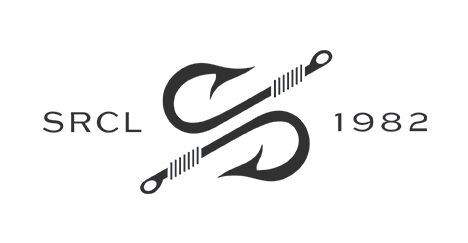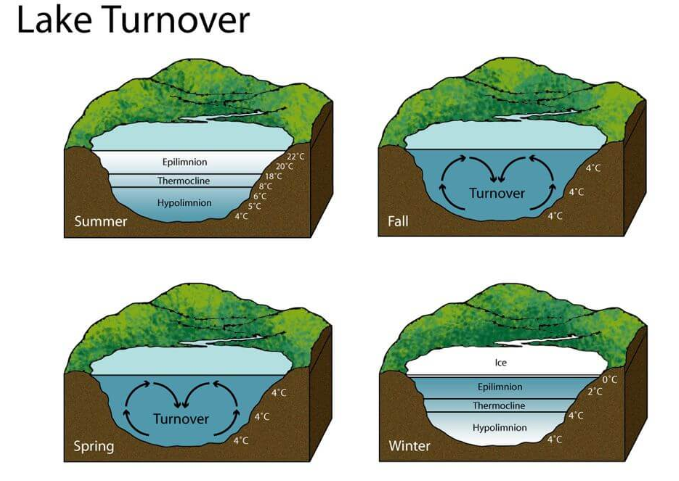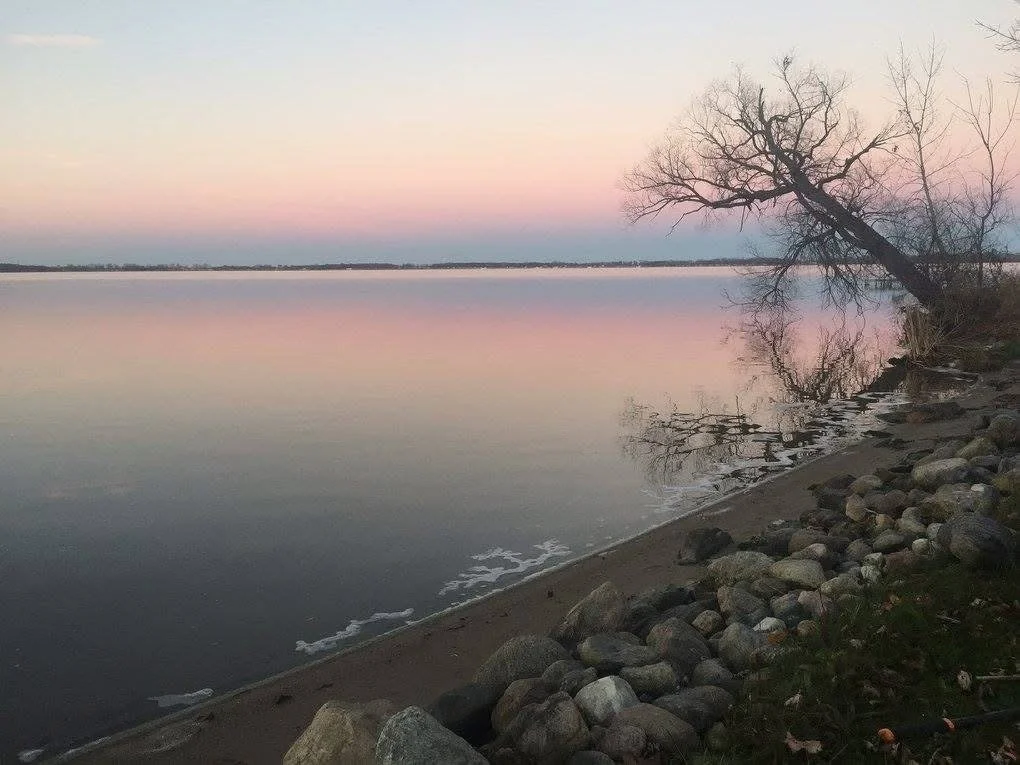Lake Turnover
Lake Turnover
Once again, our most visited page on the website is Water Levels on Horseshoe, and this time of year, the most interesting data point is the water temperature. If you’ve been keeping an eye on it, you’ll notice that the temperature was holding steady at 39 degrees, which is when water reaches its maximum density. The unique property of water reaching maximum density above its freezing point is the driving force behind the natural process of "lake turnover," which typically occurs in the spring and fall.
During the fall, as the surface water cools, it becomes denser and sinks, forcing the less dense, warmer water from the bottom to the surface. This process continues until the entire water column reaches a uniform temperature and density of around 39.2°F, allowing the wind to mix the layers. This mixing is crucial for the health of aquatic ecosystems because it redistributes oxygen throughout the lake and brings nutrient-rich sediment from the bottom to the surface.
It looks like nothing is happening, but it’s one of the most unique phenomena in nature!
Look for the lakes to start icing over in the coming days, especially with the cooler temps. And remember, report ice in dates on our Facebook page and include photos to be entered into a drawing for SRCLA swag!
Let’s track our ice in and out dates!
Ice In and Out Dates!
In the spring of 2025, we had a question about ice out dates on the Chain, which we did not track at the time. Other than MN DNR records (which are contributed by citizens to their Facebook page), we had no official record for our lakes!
We want to change that! The ask? Monitor your lake, and when you see conditions matching the official ice-in definition (you can find it on our new Ice In/Ice Out page on the website!), reply to this Facebook post with 1) lake name 2) date of observation 3) photo if possible 4) did you go the extra step and post to the DNR Facebook page?
All valid entries will be entered in a drawing for an SRCLA Goodie Bag.
Boat Wrap Law
NEW Boat Wrap Law
The Minnesota Boat Wrap Stewardship Law requires boat wrap producers to take full responsibility for the collection, recycling, and proper disposal of their products. Per the law, beginning September 1, 2025, no person may use, sell, or offer boat wrap for sale in Minnesota unless the producer responsible for that brand participates in an approved stewardship plan. A list of producers participating in the program can be found on the MPCA website.
The SRCLA talked to our local marinas to see how they were interpreting the new law. So far, the law only stipulates that the companies that sell boat wrap to marinas on a wholesale level must be certified. There doesn't appear to be a mechanism in place to implement and enforce the law at the retail/consumer level yet, so we expect more clarification to come from the MN MPCA in the future. We'll provide updates on this as more information becomes available.
Go to the Wrap Stewardship Program website to learn more. https://www.pca.state.mn.us/air-water-land-climate/boat-wrap-stewardship-program
Buoy Partners!
SRCLA and Stearns Co. Sheriff partner for buoy removal.
The SRCLA has had a partnership with the Sheriff's Office for a number of years, whereby we supply approximately 15 Rock buoys and the GPS coordinates of hazardous locations throughout the Chain so we can alert boaters to shallow prop-damaging spots. The Sheriff's Office utilizes the same specialized equipment they use to install and remove No Wake buoys to install and remove our Rock buoys.
Board member Jon Folkedahl accompanied the team this week to help out with the challenging removal process. The Rock buoys will be power-washed and stored until they're redeployed again in the spring.
A major shout-out to the Stearns County Sheriff's Office for their ongoing support of this initiative!
Lake Level Update JUNE 27
Learn about the current status of lake levels.
From Steve Weeres, SRCLA Board Member who maintains the LakeScout on Horseshoe: With the recent rains, the gauge at St. Martin is up nearly two feet over the past three days. As a result, the SRCLA's Lakescout on Horseshoe Lake is up nearly six inches and is likely to increase another 4 - 6 inches before peaking next Tuesday. You can monitor both gauges at our website: https://srcl.org/water-level-horseshoe
Please keep an eye on your docks, lifts and other things along your shoreline.
Natural Shorelines = Healthy Lakes June Video
June’s Lake Steward video from MLR
Loons need clean and clear water to dive and find food for their babies. Natural shorelines are crucial for loons to slow and filter runoff to keep our lakes clean and clear for them. Natural shorelines also provide nesting habitat, nursery areas, shelter, and foraging grounds. Loons also use natural shoreline materials to build their nests nearby. You can help your lake and loons by planting a natural shoreline. Become a Lake Steward! It's easy and there's help.
This shoreline series is a project with Minnesota Lakes and Rivers Advocates. Go here to learn more about the Sauk River Chain of Lakes Association's Lake Steward initiatives.
CLP Harvest Update
CLP Harvest Update
An update from our partners at WeedsUp! Here are the maps of the areas harvested earlier this week. Great work! You can view the approved treatment plans and the actual treatments on the SRCLA Projects Page. YOUR Membership contributions help make this happen!
If you have questions, contact a Board member: https://www.srcl.org/contact
If you want to learn more about the process for managing AIS and make a positive impact, consider joining the Board: https://www.srcl.org/join-the-board
🌸 Beer & Blooms 🌸
SWCD Sponsored Event July 8
Join the Sauk River Watershed District on July 8 for a tour of great gardens in the Cold Spring area!
Register through ROCORI Community Education:
https://rocori.ce.eleyo.com/course/1866/summer-2025%E2%80%943/beer-blooms
Questions? Contact Kory at Kory@srwdmn.org.
Spring Chain Link now on website; Water Quality chart correction
Spring Chain Link now online: Water Quality chart correction
The digital version of the 2025 Spring Chain Link is now available on the website, under News -> Chain Link Magazine Archive. We’ll be featuring several articles over the summer!
In the print edition of our latest issue of The Chain Link, the Dissolved Oxygen Levels (by Lake) chart included incorrect labels for a few lakes. We want to clarify that only the lake names were mislabeled—the data itself remains accurate and unchanged.
What Was Affected:
• Lake names in the chart were mismatched due to a labeling error in the layout.
• Dissolved oxygen data points were correctly recorded and displayed; only the associated names were in error.
What’s Correct Now:
• All lake names have been reviewed and updated to accurately reflect the corresponding data.
• No changes were made to the dissolved oxygen readings or the temperature measurements.
Understanding dissolved oxygen is critical for anyone working with aquatic environments, as it directly affects water quality, aquatic life, and ecosystem health.
We appreciate your understanding and are committed to maintaining accuracy in all our environmental reporting. If you have questions or would like to explore more about water quality on the SRCL, please visit our new Water Quality page, under development. Stay tuned for monthly water quality testing updates throughout the summer!
Own Your Wake
OWN YOUR WAKE
When you’re enjoying one of Minnesota’s beautiful rivers or lakes, it’s crucial to be mindful of your wake. Every boat creates a wake, and being considerate of how it impacts other boaters and the shoreline is essential. Plus, minding your wake is key to keeping people safe while on the water. Here are some tips to help you navigate responsibly:
🚤 Be aware of your environment — look out for swimmers, other boaters, no-wake zones, etc. to prevent injuring other water-goers.
🚤 Slow down BEFORE the no-wake zone
🚤 Stay at least 200 feet away from shoreline, docks, and other structures to prevent damages and shoreline erosion.
🚤 Minimize repetitive passes — once you’ve run a line, move onto another area.
🚤 Respect the rights of others to enjoy their time on the water!
By taking these tips to heart, you can help keep Minnesota’s waters safe and fun for all! For more details, head to https://www.dnr.state.mn.us/safety/boatwater/own-your-wake.html
CLP Channel Treatment: Part 2
CLP Treatment on the Chain, ETA June 13
This map shows the next round of channel treatments approved by the DNR. The goal is to have it done by June 13.
If you have more questions, contact a Board member.
If you want to learn more about the process for managing AIS and make a positive impact, consider joining the Board.
REMEMBER the Annual Meeting is June 14 9AM at Shady's Long Shots.
rence.
Spring Photo Contest Winners
Congrats to the winners!
Thank you to everyone who took the time to send in their pictures of the Chain for the Spring Photo Contest. We had 22 delightful submissions. Our board enjoyed all of the images, it was hard narrowing it down to just three winners. We'll be featuring all of the images over the coming weeks online. Congratulations, Steve Reid, Britta Ruth, and Malissa Mauricio (she had two of the top four images). We hope you enjoy your SRCLA apparel!
Attention Boaters, Anglers, and Shoreline Residents
Two-sided cards that list the steps recreational users can take to prevent the spread of aquatic invasive species.
We all play a role in helping contain invasive species, whether you're a boater, an angler, or a shoreline resident. Here are some helpful reminders from the DNR on what you can do if you are one, two, or all three of these!
Download a PDF of the Attention Boater information.
Download a PDF of the Attention Angler information.
Download a PDF of the Attention Shoreline Resident information.
Lake Level Update
Learn about the current status of lake levels.
With the recent heavy rain in the Sauk River Watershed, be sure to follow the lake level portal on the SRCL website.
The river level at St Martin is increasing from 15.5 feet and may crest at near 18 feet. The increased flow will raise the level of the Chain approximately 10 to 15 inches in the next 5-7 days.
Make sure your shoreline and things are secure!
View the current status here: https://srcl.org/water-level-horseshoe
CLP Channel Treatment
CLP Treatment on Great Northern, Krays, ETA May 23
The DNR has issued aquatic plant management permits to apply herbicides to create channels in the areas shown in the map below. The SRCLA is pursuing additional permits for other areas across the Chain as well. Stay tuned!
rence.
Natural Shorelines = Healthy Lakes May Video
A short video on the Lake Steward program from MLR
Natural Shorelines help our lakes' water quality, wildlife, and pollinators. Learn how you can become a Lake Steward and join others across Minnesota in helping to keep our lakes healthy and beautiful.
This shoreline series is a project with Minnesota Lakes and Rivers Advocates. Go here to learn more about the Sauk River Chain of Lakes Association's Lake Steward initiatives.
Responsible catch-and-release fishing
Responsible catch-and-release fishing
With the fishing opener upon us, here are some great reminders for responsible catch-and-release fishing, which can help ensure continued quality fishing opportunities. Anglers can boost the odds of fish surviving catch and release by using methods that avoid internal damage caused by hooks, stress, and being pulled from deep water.
Fish hooked in the mouth almost always survive. Set the hook quickly to avoid hooking a fish deeply. Jigs, circle hooks and active baits like crankbaits are more likely to hook a fish in the mouth.
Don’t angle for fish in very deep water, unless you plan to keep what you catch. Fizzing of fish, or the act of inserting a needle into a fish intended to deflate the gas bladder, caught from deep water can do more harm than good and is not legal.
Have pliers ready that work well for taking hooks out. Cutting the line and leaving the hook in the fish is also a good option.
Quickly land a fish to minimize the fish's time out of water.
Handle the fish firmly but carefully. Wet your hands before touching a fish to prevent removal of their protective slime coating. Rubberized nets help, too.
Unhook and release the fish while it is still in the water, if possible, and support its weight with both hands or with a net when removed from the water. Never lift them vertically from the water.
Do not place fish you plan to release on a stringer or in a live well.
Revive a fish by cradling it under the belly and gently moving it forward in the water until it swims away.
Do not release a fish that can be legally kept if it is bleeding heavily or can't right itself.
And for those anglers looking to land a big one, here's a video from the MN DNR on handling large fish.
Weed Management, Transparency, and Communication
Weed Management, Transparency, and Communication
Weed and shoreline management is one of the most popular questions our Board receives, whether in the recently completed survey or conversations. It is critical that property owners manage their own frontage while the SRCLA simultaneously works on larger navigable and priority areas. Through collaboration, access can be maintained. We encourage you to use our website (srcl.org) to learn more about it and to communicate your questions and concerns with the Association. We're excited to share a new tool now available on our website! Need to know where to treat, how to treat, whether you need a permit, etc.? This tool is made for you!
To learn more about weed management or things you can do, go to https://www.srcl.org/aquatic-plant-management.
For transparency and projects involving weed management that the SRCLA Board has done over the years, all the weed management activities since 2020 are documented at https://www.srcl.org/projects.
The SRCLA Board consists of 11 volunteers from across the Chain who meet monthly all year round. For further transparency and insights on the Board’s budget and decision-making process, see the minutes posted at https://www.srcl.org/board-1. In addition, the monthly meetings are open to the public and are posted on the calendar at https://www.srcl.org/calendar-1. Simply let a Board member know (https://www.srcl.org/contact) you would like to attend to observe, or time can be put on the agenda to hear your concern or issue.
Despite Board members representing areas across the Chain, we can still miss concerns and issues. Communication is key. Reach out directly to a Board member by reviewing the area they work in and their contact information at https://www.srcl.org/contact, and give a call or send an email. If you don’t know who to contact, submit a message using the general contact form.
Finally, anyone can be a Board member. Each Board member serves a minimum of two years, and about half of the Board needs to be elected each year at our annual meeting. If you are interested in being a Board member, go to https://www.srcl.org/join-the-board, and a Board member will contact you with more information. This year’s annual meeting is open to the public and is on Saturday, June 14, at Shady’s Long Shots at 9 am.
2024 Survey Results
2024 Survey Results
Some greaThe SRCLA Board wanted to take a fresh approach to hearing from our Chain of Lakes lakeshore owners. In late 2024, we worked with St. Cloud State University and a group of their students to survey all SRCL lakeshore owners, both members and non-members. We're excited to share the results here (these are posted on the Projects pages as well)..
The feedback we gathered has already fueled some changes including how we communicate, and we plan to continue using it to help us make decisions. We hope to continue surveying on an ongoing basis.
We'll be sharing some of the positive comments throughout the summer and taking a couple of deep dives to address your concerns. Thank you to all who took the time to respond!
Lake Levels and Dock Placement
Lake Levels and Dock Placement
Some great advice from Steve Weeres, who maintains the LAKESCOUT data buoy on Horseshoe:
With ice-out and landowners contemplating the installation of their docks and lifts, the lake level graph and historical data can be a guide to where to place their equipment.
* The lake level as of today (4/14) is 1087 feet.
* Based on history the lake will not go below 1086 feet, a maximum 1 foot drop.
* The highest level in 2024 was 1088.4 feet, an increase of about 1 1/2 feet.
* When placing the dock in the water plan on a potential increase of 1-2 feet if we experience a high precipitation event.
* When placing the lift in the water, assume a 1 foot drop if there is an extended dry period.
As always, you can use the https://www.srcl.org/water-levels-on-horseshoe to monitor.






































